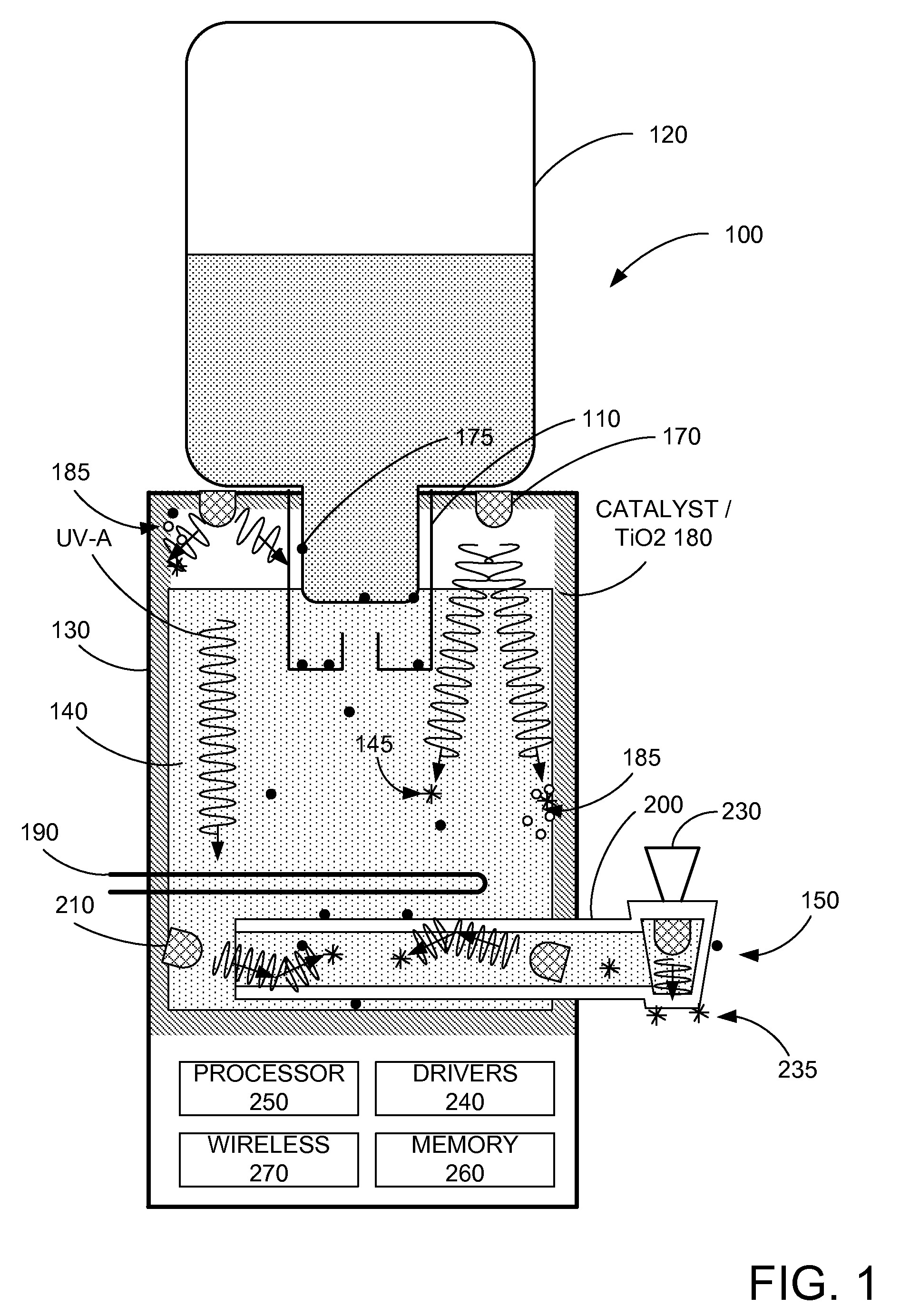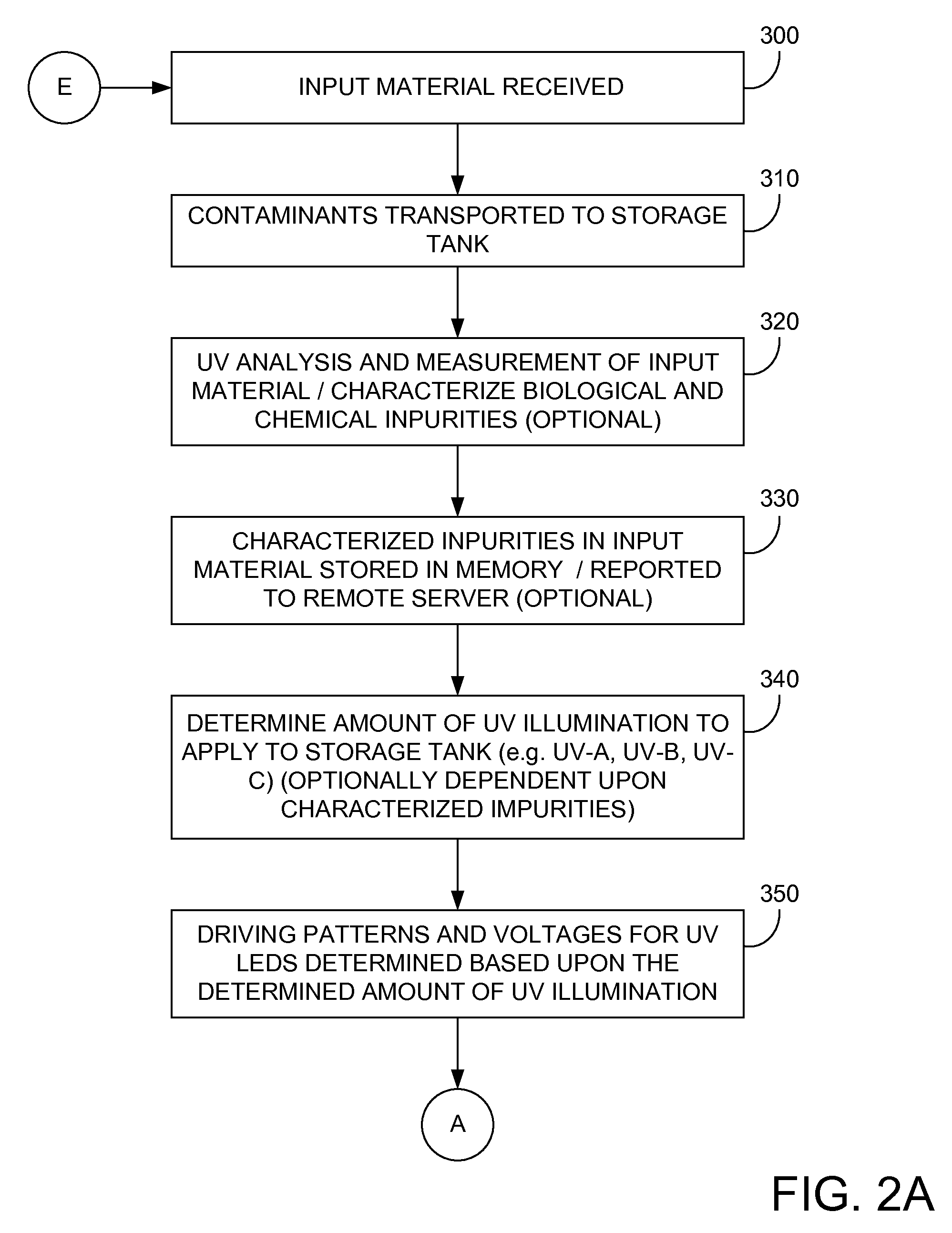System and method for dispensing UV treated materials
a technology of uv treatment and dispensing system, which is applied in the direction of water treatment compound, water treatment parameter control, transportation and packaging, etc., can solve the problems of reducing the efficiency of the bulb in colder temperatures, and reducing the life of the bulb, so as to reduce the formation of contaminants in the intake portion and storage portion.
- Summary
- Abstract
- Description
- Claims
- Application Information
AI Technical Summary
Benefits of technology
Problems solved by technology
Method used
Image
Examples
Embodiment Construction
[0019]FIG. 1 illustrates a diagram of an embodiment of the present invention. More specifically, FIG. 1 is a diagram of a typical water cooler 100 found in many homes and businesses in the US and other countries. As shown, water cooler 100 includes a receiving portion 110 adapted to receive a water source (e.g. water bottle) 120, a central storage tank 130 for storage of water 140, and an output portion 150. In various embodiments, water source 120 and / or central storage tank 130 may be of any size, for example 1 cup to 10's of gallons or even larger. In some embodiments, water source 120, central storage tank 130, and output portion 150 may be located at the same physical device, or remote from each other. For example, in some embodiments, water source 120 may be a water tank in a dwelling, a municipal water supply, or the like, and a water line is connected to the central storage tank 130. Additionally, central storage tank 130 can supply liquids to one or more output portions 150...
PUM
| Property | Measurement | Unit |
|---|---|---|
| frequency | aaaaa | aaaaa |
| power | aaaaa | aaaaa |
| DC voltage | aaaaa | aaaaa |
Abstract
Description
Claims
Application Information
 Login to View More
Login to View More - R&D
- Intellectual Property
- Life Sciences
- Materials
- Tech Scout
- Unparalleled Data Quality
- Higher Quality Content
- 60% Fewer Hallucinations
Browse by: Latest US Patents, China's latest patents, Technical Efficacy Thesaurus, Application Domain, Technology Topic, Popular Technical Reports.
© 2025 PatSnap. All rights reserved.Legal|Privacy policy|Modern Slavery Act Transparency Statement|Sitemap|About US| Contact US: help@patsnap.com



